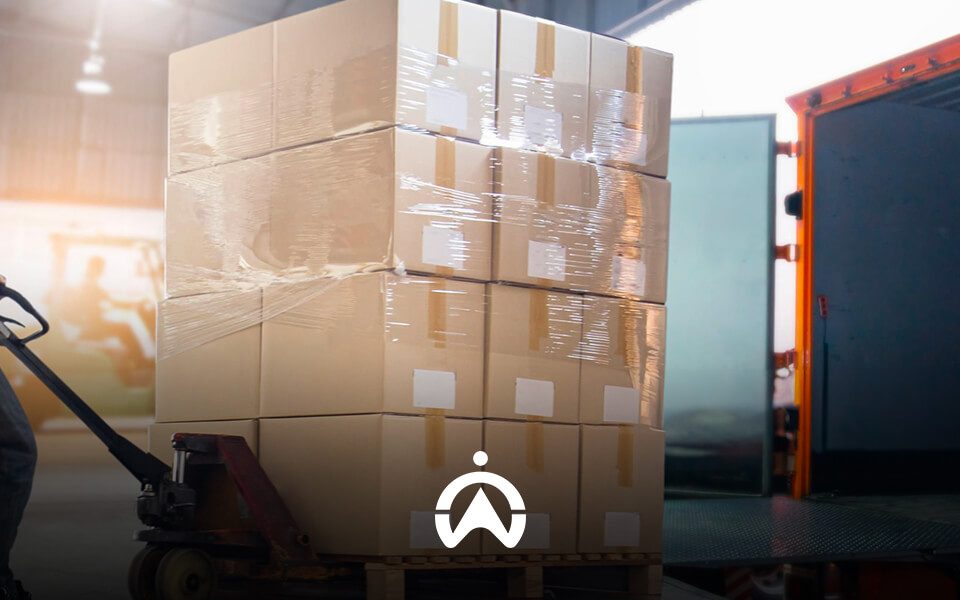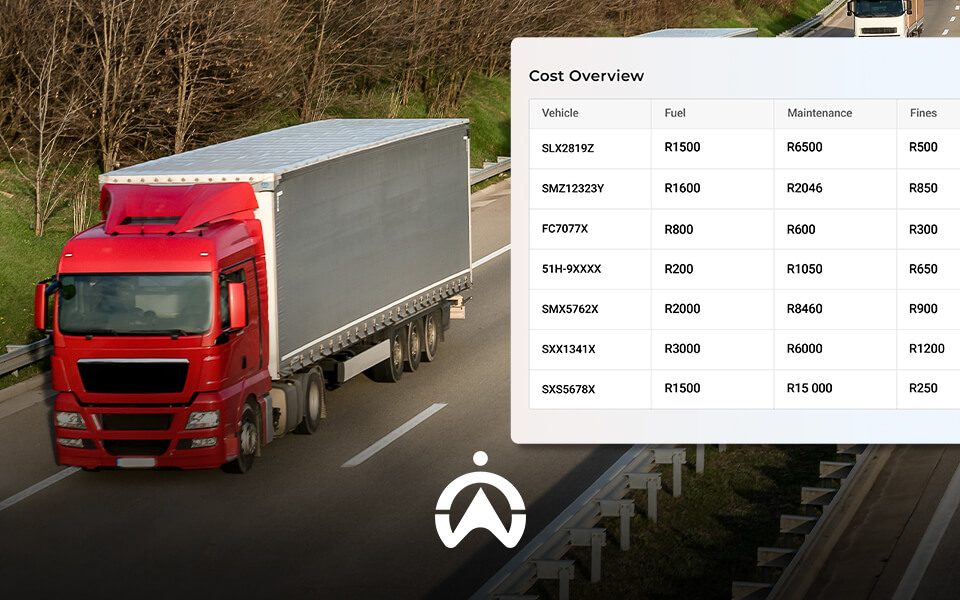Power Take-off: The Complete Guide You Need to Know About for Your Vehicles and Trucks
Knowing how vehicles and equipment in your fleet work is crucial for developing an effective and well-oiled fleet management system.
As a must-have component for fleet vehicles with unique or specific purposes, power take-off is important to understand if you want to get the most from your fleet’s day-to-day activities.
Read on to learn everything about power take-off, how it works, and how to use power take-off monitoring to transform your fleet operations.
The basics of power take-off (PTO)
The power take-off or PTO is a fundamental part of many fleet vehicles’ operations, especially those that have additional functions like raising truck beds, cranes, or any other function required without directly using energy from the vehicle’s engine.
What is the principle of power take-off?
Think of PTO as a portable power generator that transfers energy from your vehicle engine to an auxiliary component like a crane or hydraulic pump. Ultimately, it helps transfer energy to other essential parts of a vehicle without using the main power source. This has many benefits like ensuring an even and consistent power distribution that meets a vehicle’s specific requirements.
What vehicles and equipment have power take-off?
With the potential to power a wide range of equipment, PTO is commonly used in fleet, construction, and other industrial vehicles with the following equipment types:
- Auxiliary Equipment
These devices use engine power to perform specific functions like pulling heavy loads or operating hydraulic systems on commercial trucks or other industrial vehicles.
- Commercial Vehicle AttachmentsAccessories like tow arms and compressors use the PTO powered by the vehicle engine to function optimally.
- Construction EquipmentAny ancillary attachments like cement mixers, cranes, or concrete pumps work efficiently using vehicle engine power thanks to the power take-off.
Power take-off types and how they are applied
Looking at how many different types of equipment PTOs can power, it’s also important to establish whether there is more than one type of power take-off and identify their advantages and disadvantages.
- When taking a closer look at how PTO is applied, there may be a slight difference in application. For example, a mechanical type known as a live-power take-off is linked to the engine with a belt or shaft. However, while its constant power supply makes it a great tool, it can be subject to costly repairs as it’s prone to wear and tear over time.
- Another type of mechanical power take-off is called auxiliary or independent PTO. Here, the PTO’s speed is completely independent of the vehicle’s ground speed and can be activated or disengaged while the vehicle is moving.
- The hydraulic PTO is the third type. It uses hydraulic fluid to do a power transmission from the engine to the external component with the power requirement. Hydraulic PTO is a great option because of its increased efficiency, but it’s also more expensive than live power and independent PTO.
Overall, hydraulic PTOs are more popular due to their increased efficiency.
How does PTO monitoring work? Unloading everything you need to know
Not only is power take-off a valuable device that provides additional power for a variety of fleet, construction, and agricultural vehicles, but keeping an eye on your fleet’s PTO also has some fantastic benefits for improving its performance.
The power take-off is monitored using a specialised sensor. By being able to keep tabs on the PTO’s activity, you can track your fleet vehicle’s productivity. Let’s take a closer look at how this sensor works and how it measures PTO activity.
How the power take-off sensor works its magic
The PTO sensor is a small device designed to pick up and monitor any auxiliary or supportive activities powered by the vehicle engine, making this sensor a game-changer for checking vehicle usage for working hours and productivity.
The main mechanism in the PTO sensor picks up when a vehicle’s on/off indicator is triggered, which creates an event that can be recorded on a linked telematics system. PTO sensors can pick up a variety of support activities, making them very versatile in a fleet environment across several work settings.
A PTO draws its power from the vehicle engine, and it needs to be engaged before it can start transferring power. As there is more than one type of PTO, there is more than one engagement method; so, for example, it can be via air pressure or hydraulic pressure. After the PTO has been engaged, its output shaft will transfer power to the auxiliary element, activating the function or component linked to the vehicle. A good example here would be moving the mechanical arm of a construction vehicle.

Common types of PTO monitoring data
PTO sensors pick up specific activity depending on the vehicle type and function. For example, a crane’s PTO sensor will pick up the movement of the crane’s arm, while a dump truck’s PTO sensor will pick up the lifting of the truck bed.
Take a look at some of the most common types of data picked up by a PTO sensor.
- Trip fuel used
- Oil temperature
- PTO is engaged, meaning the vehicle is working as it should
- PTO idling (productive vs. unproductive idling)
These are all examples of crucial information fleet managers need to determine their fleet’s productivity levels and whether they’re over or underperforming.
The link between power take-off monitoring and effective fleet management
Power take-off enables ordinary vehicles to do extraordinary things across industries, simplifying construction, agriculture, waste disposal, and more. PTO monitoring also has great benefits for fleet managers and can transform your fleet’s daily performance by supporting increased productivity during set working hours. Here are some top reasons you should consider PTO sensors for your fleet.
Why you need PTO sensors for your business
There are various ways to track your fleet activities with telematics, but external PTO monitoring adds relevant information with lots of potential value for fleet management. Consider the following pros linked to having PTO sensors in all of your fleet vehicles and how this extra tool can build on your fleet’s overall performance.
- Improved cost management and fuel usage: An active PTO means a vehicle is busy performing additional activity, resulting in increased fuel usage. Tracking PTO engagement patterns can help develop crucial fuel and cost-saving strategies.
- Boosted safety and compliance: Some industries require reporting or tracking to ensure regulatory standards are being adhered to, and PTO monitoring can add value here by offering valuable data. From unauthorised to misuse of fleet vehicles and equipment, PTO sensors help promote safety and compliance in the workplace.
- Accurate diagnostics and troubleshooting: Hit the nail on the head when you’re troubleshooting with useful data like irregularities. Knowing about inconsistencies helps you trace and address the cause or main issue instead of only the symptoms.
- Optimised maintenance planning: Fleet vehicles have extended active hours, leading to unavoidable wear and tear and an increased need for service and maintenance. PTO data can help provide context on runtime and engagement frequency, helping to estimate smart preventative service and maintenance times.
- Operational proficiency: PTO monitoring can provide crucial insights into not only when but also how fleet vehicles’ PTOs are used. Fleet managers can use this information to improve overall operational proficiency and prevent unauthorised use of company vehicles, which can have a positive effect on the company’s budgets and annual ROI.

How Cartrack’s specialised sensors helped Concord Cranes level up their fleet monitoring
Concord Cranes provides crane hire solutions in South Africa. With over 180 cranes, their services range from transport to specialised lifting projects and the hiring of mobile cranes; however, they struggled to accurately record their equipment working hours, impacting timely deliveries and overall customer satisfaction.
- Cartrack’s specialised PTO sensors and IoT device enabled Concord Cranes to track their crane’s on-site working hours and miles travelled, giving them complete visibility of their vehicle activity.
- With accurately tracked working hours as well as access to advanced predictive maintenance insights, the company was able to ensure timely deliveries while implementing preventative maintenance measures, increasing its fleet’s longevity and reducing costly repairs.
- Concord Cranes also used Cartrack’s fleet management platform to boost their brand reliability. With software that allows streamlined driver scheduling and proactive service planning tools that ensure their cranes are always in tip-top shape, enabling them to maintain a high level of customer satisfaction.
“Using Cartrack’s advanced fleet management, we have been able to increase our operational efficiency to deliver a better service to our customers, as well as effortlessly establish a maintenance cycle that reduces our costs and increases our fleet longevity.”– Gareth Langley, Concord Cranes operations manager
This is just one of many examples of how Cartrack’s advanced SaaS products can help you gain full control of your fleet.
Cartrack’s advanced sensors can help optimise your fleet’s productivity
Apart from PTO being a crucial component in running many construction, agricultural, and other commercial vehicles, its monitoring potential can transform the way you manage your fleet. Understanding the power of monitoring your PTO is key to having full control and keeping your fleet’s performance on track.
Contract Cartrack today and get the tools to help increase workplace productivity and advance your fleet operations.



